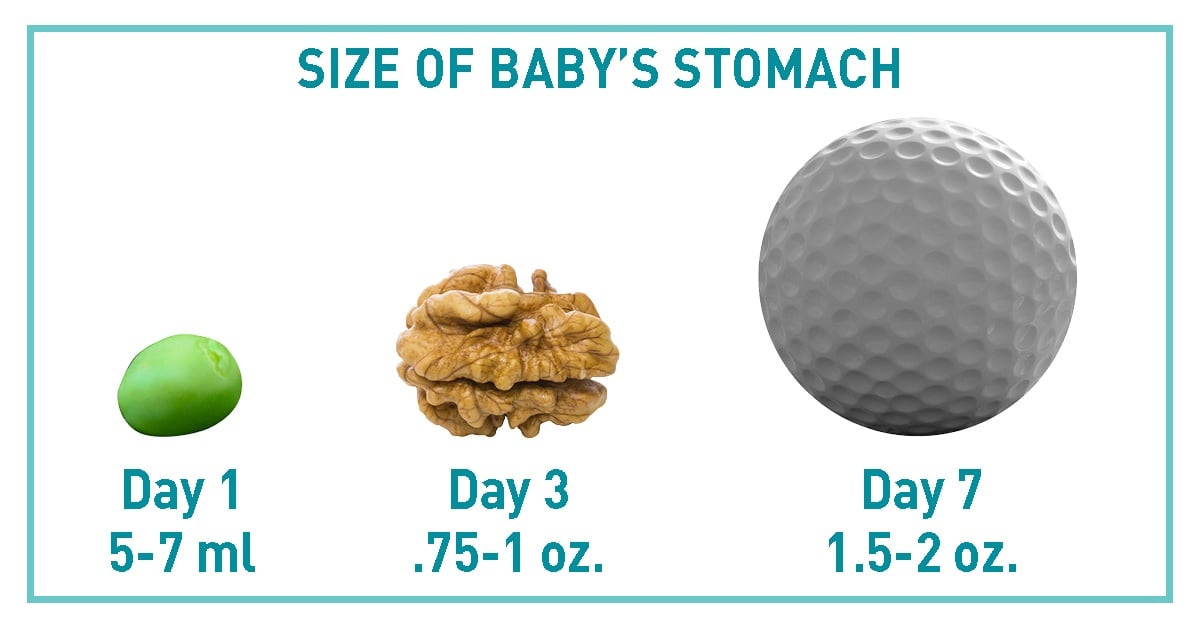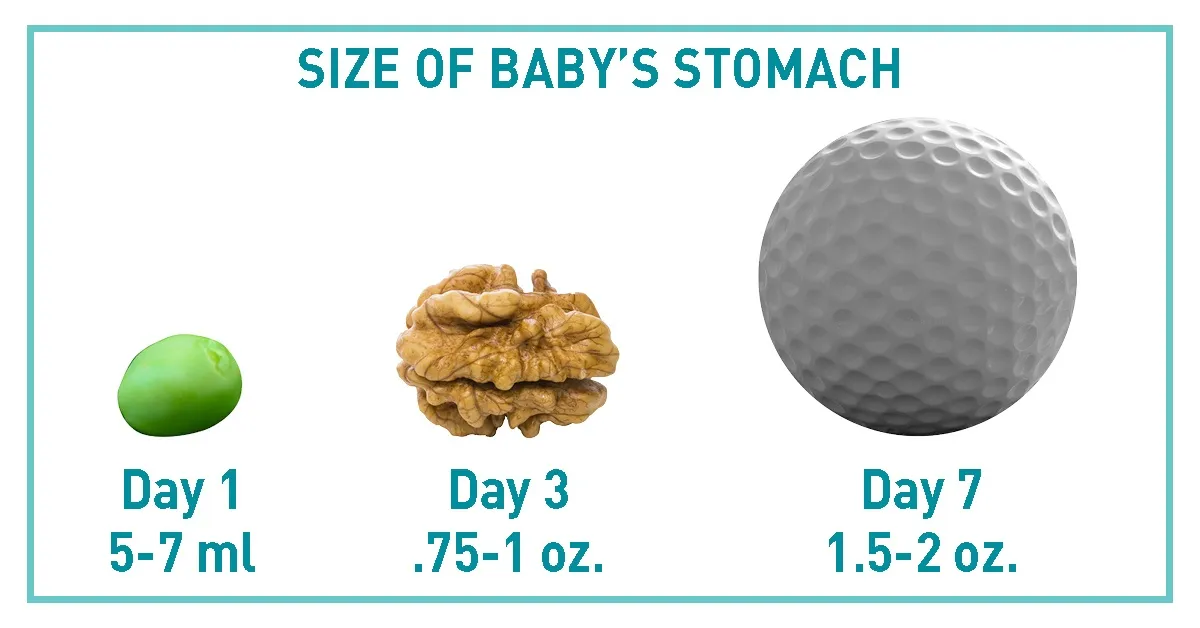Nutritional Requirements of the Breastfed Newborn
The First Few Days of Feeding
At birth, a baby’s stomach is the size of a pea or small marble and can hold around 1 (5ml) teaspoon. At 2 days of age, a baby’s stomach is about the size of a walnut. Gradually, the stomach increases in size and by the time the baby is 7-10 days old, it is approximately the size of a golf ball and holds anywhere from 1-2 (30-60ml) ounces. 
During the first few days, a baby’s feedings will consist of colostrum, or the “first milk.” Colostrum is rich in proteins, fat-soluble vitamins, minerals and immunoglobulins. Immunoglobulins are antibodies that are passed from the mother and protect the baby from a wide variety of bacterial and viral illnesses. Another important function of colostrum is to serve as a laxative to clear the baby’s intestinal tract of meconium. The “first milk” is thick so the newborn can master the skill of sucking, swallowing and breathing. It is not unusual for the baby to suckle 4-6 times consistently before having enough milk in his or her mouth to swallow.
Feedings
Every newborn infant should be treated as an individual and may feed as little as 4 times or as many as 12 times in the first 24 hours. Each feeding should consist of at least 5 minutes of consistent suckling with a sustained latch and may be as long as 30 minutes on each breast. The frequency of feeding is influenced by several factors that may include the mother’s health status, medications used prior to delivery, a difficult delivery, health status of the baby and hospital routines such as vital signs, circumcisions and lab draws.
The second night after birth, a baby is typically more awake and aware of his surroundings. It is not unusual for a baby to want to go to the breast frequently, nurse for a short time and then fall asleep. The baby may also cluster feed, which is several small feedings in a row. This behavior is considered normal and encourages the mother’s milk supply to increase at a quicker pace. Keep in mind that every time a baby feeds counts towards the 8-12 feedings per day that a baby should have by day 4.
Diaper Changes
Elimination in the breastfed newborn starts out slowly. In the first 24 hours, a baby should have 1 or more wet diapers and 1-2 meconium stools. During the second day, a baby should have 2 or more wet diapers and 2 or more meconium stools. By day 4 or 5, a baby should have 6 or more wet diapers and at least 3 quarter-sized, or 1 large liquid yellow stool per day. It is not unusual for some babies to have a stool each time they eat. Consider this a bonus; no need for concern!

Shannon Roberts, BSN, RN, RNC-OB, is the Director of Women's Services. She previously served as Unit Director on Chesapeake Regional Medical Center’s Labor & Delivery unit, where she worked for more than 20 years. She received her Bachelor of Science in Nursing degree at Old Dominion University in Norfolk and also is certified in inpatient obstetrics. She began her tenure at CRH as a candy striper at age 14.